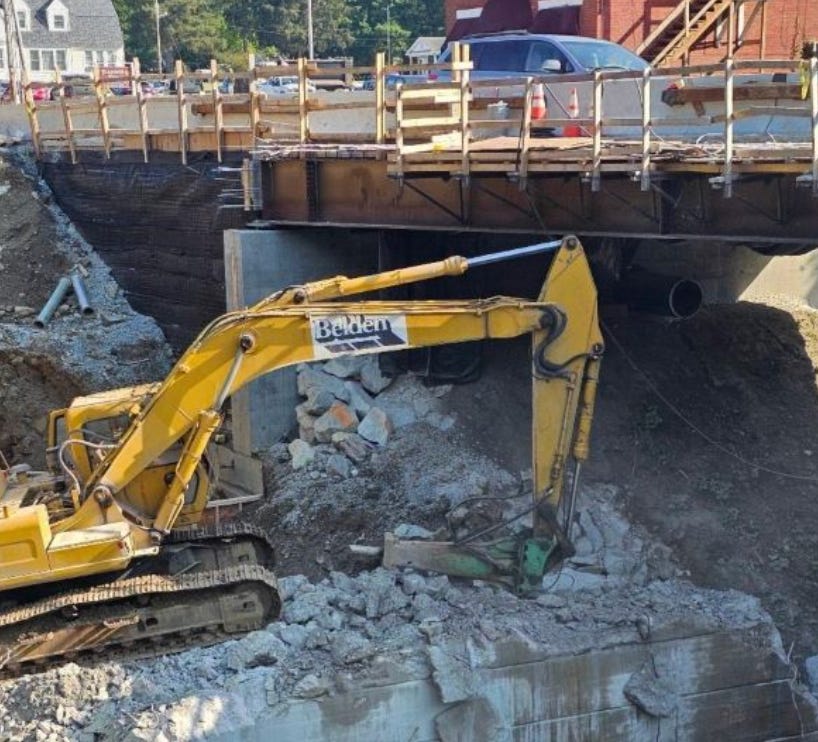Vermont's $7.5M Transportation Cut: A Symptom of a Larger Funding Crisis
The FY2026 transportation budget was constructed on a precarious foundation of one-time funds and major fiscal maneuvers, leaving it vulnerable to even minor revenue underperformance.
A plan from the Vermont Agency of Transportation (VTrans) to cut $7.5 million from its current budget has brought a long-simmering fiscal challenge to a boil. While the proposed cuts to construction, maintenance, and staffing address an immediate revenue shortfall, they also reveal deeper, structural issues in how the state pays for its essential infrastructure. The plan, now before the legislature, sets the stage for a critical debate not just about balancing a budget, but about the future of transportation funding in an era of evolving technology and strained revenue streams.
The Immediate Cuts: A Plan to Bridge a $7.5 Million Gap
On September 10, 2025, VTrans submitted a formal rescission plan to two key legislative bodies: the Joint Transportation Oversight Committee and the Joint Fiscal Committee. This action was mandated after state economists, in a July 31, 2025, meeting with the Emergency Board, officially downgraded revenue projections for the Transportation Fund by $7.5 million for Fiscal Year 2026.
According to the official revenue report from that meeting, the downgrade was driven by weaker-than-expected receipts from two primary sources: the tax on motor vehicle purchases and fees collected by the Department of Motor Vehicles.
The rescission plan outlines a series of specific cuts to close this new budget gap:
$2,254,000 in "position management savings."
$2,000,000 from the delay of a VTrans garage construction project in Springfield.
$915,000 from reductions in roadside maintenance, including tree trimming, mowing, and culvert cleaning.
$500,000 from the delay of a rail platform project in Rutland.
$230,000 from a suspension of agency travel and conference participation.
Additional smaller cuts round out the total.
The Joint Fiscal Committee, which must approve any changes to the legislatively passed budget, is scheduled to review the plan on September 18.
Decoding "Position Management Savings"
The largest single cut, labeled "position management savings," was left unexplained in initial reports. This term is a form of government budget jargon that typically refers to savings achieved by not filling vacant positions, implementing hiring freezes, or delaying the hiring of new employees. It is distinct from layoffs, which involve terminating current employees.
By holding positions open for a period of time, an agency can save the money that would have been spent on salary and benefits. While VTrans has not provided a specific breakdown of which positions will be affected, this strategy avoids direct job losses but can lead to increased workloads for existing staff and potential delays in services over the long term.
A Cut on Top of a Crisis: The Larger FY2026 Budget Challenge
Crucial context for the current $7.5 million problem is the immense fiscal pressure VTrans faced just months ago. During the creation of the FY2026 state budget, legislative records and reporting from the 2025 session show that the agency had to close a much larger, pre-existing budget gap of approximately $61.5 million. That gap was closed through a combination of finding new revenue, shifting funds, and making other programmatic adjustments.
This history reframes the current $7.5 million cut not as an isolated incident, but as an additional strain on an agency already operating under significant financial duress.
Structural Cracks: The Long-Term Revenue Problem
The immediate revenue shortfall is a symptom of systemic, long-term challenges to Vermont's transportation funding model, which has for decades relied heavily on the gasoline tax.
Declining Gas Tax Revenue: As vehicles have become more fuel-efficient and as more Vermonters adopt hybrid and fully electric vehicles (EVs), the revenue collected from the per-gallon tax on gasoline has been in a steady decline. The state's transportation infrastructure costs continue to rise, but its primary funding source is shrinking. In response, the legislature passed a new annual fee on EVs in 2024 to help offset some of this loss, but it does not fully replace the lost revenue.
Diversion of Funds: For years, a significant portion of the Transportation Fund—around $20 million annually—was transferred to the state's General Fund to help pay for the Vermont State Police. Legislators and transportation advocates argued this practice diverted money intended for roads and bridges. During the 2025 legislative session, lawmakers successfully halted this annual transfer, a move designed to shore up the Transportation Fund for the long term. However, as Rep. Matt Walker, R-Swanton, noted in a recent interview, that measure alone is proving insufficient.
The Path Forward: Lawmakers to Weigh In
The VTrans rescission plan will now be debated in public hearings. Representative Walker, who chairs the House Transportation Committee, has already signaled that these cuts highlight the need for a more fundamental conversation about funding. "We’re going to have to close this gap," he stated, arguing that "all things need to be on the table" for a long-term solution.
The decision rests with the Joint Fiscal Committee, which is empowered to approve, reject, or modify the agency's plan. The committee's deliberations will address the immediate $7.5 million problem, but the testimony and debate will inevitably serve as a preview of the difficult choices Vermont faces in funding the future of its transportation network.



